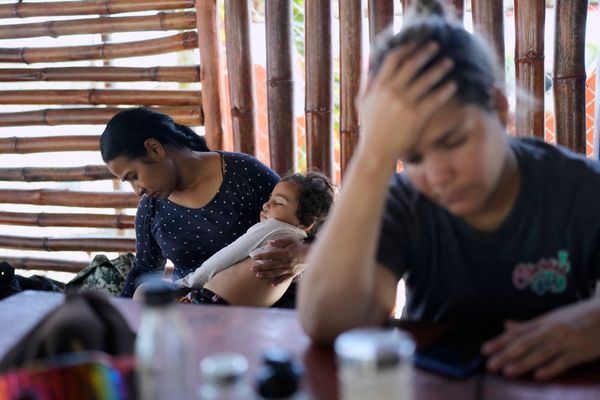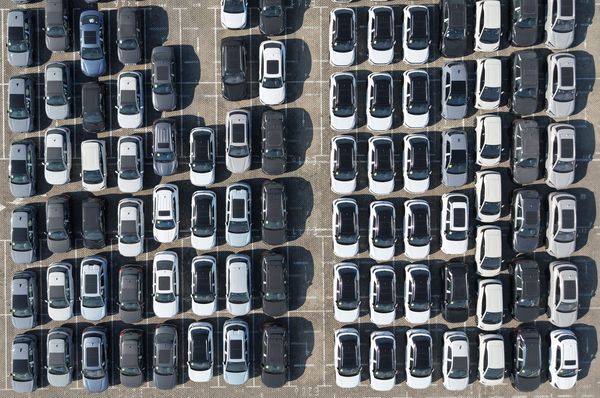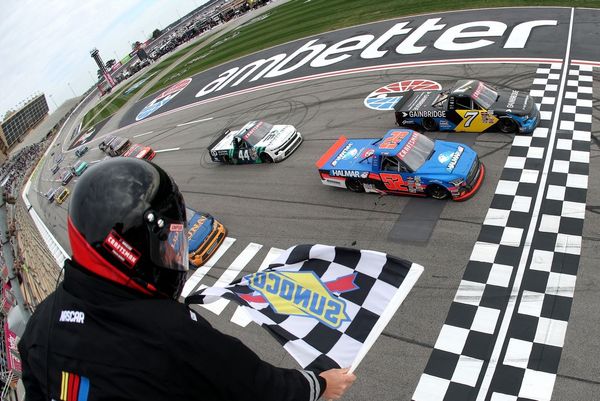
“The major parties have ruined our society. We must never again allow these human rights atrocities to occur…” says Ladeisha Verhoeff, the United Australia Party candidate for Curtin, her voice increasingly quivering with passion, her speech delivered popping through the mic like a wedding speech.
We’re at Hollywood Subiaco Bowls Club, clean square lettering on the red-brick building fading to gold on its way to the ceiling. The grounds surrounding are immaculate, ocean-blue sky parks and newly built houses. The attendees are equally pristine: white jackets, linen shirts, colourful jeans. A persistent mid-Atlantic lilt in the voices. There would be few places in Australia less suited to this grandiose pitch, the vision of a dystopian Australia, laid waste by power-hungry elites, requiring people to keep a record of their vaccine status.
The forum is organised by Hollywood Learners — a frightfully charming local community group, meeting every third Friday for meetings dedicated to ongoing learning and the civic good. The room is packed out by a largely wealthy retiree crowd. The questions are polite and focused and the answers similarly so — and it’s jarring, the apparent catastrophic trampling of free speech.
Hollywood runs only for a few blocks, a little enclave named by property developer Cyril Dudley in the 1920s to give a little glamour to what was then scrubby bushland in Nedlands, largely populated by returning World War I veterans and their new brides. Perth’s war graves are across the road from the bowls club.
The Curtin electorate: Western Australia’s wealthiest seat, taking in the old money from “golden triangle” suburbs like Nedlands, Dalkeith and Claremont, heading to the sea in Cottesloe and as far north as Scarborough. It’s a place of public rose gardens, beachside mansions and fancy supermarkets, but also extends far enough north to take in the mixed-wealth suburb of Innaloo, home to the only marginal booth in Curtin.
It has never been won by anyone other than a Liberal in 70 years (apart from Allan Rocher’s brief turn as an Independent). Under former Liberal deputy Julie Bishop, it became one of the country’s safest seats. But while the seat remained safe after the drop that inevitably followed Bishop’s departure, this year it’s considered very much in play. The journo for local paper The Post, sitting next to me, says it’s the most interesting election the paper’s ever covered.
It’s a doubly problematic situation for the Coalition in the state — more than anything, it pulls resources away from more marginal seats to protect a seat they should have been able to pencil in on day one.
After Verhoeff, there is Labor’s Yannick Spencer — a McKinsey guy, but you weren’t going to roll out a dock worker in Curtin, were you? He’s got an easy charm, a good grasp of the policies and a dry wit — I’m reminded of Dean Harris, the remarkably polished candidate for Warringah 2019 and wonder what he might do somewhere Labor had a shot. Before Verhoeff is the Greens’ Cameron Pidgeon, a big, broad guy with an almost shockingly gentle and diffident speaking style.
At the beginning, organiser John Hall asks for a show of hands regarding who is undecided and who is campaigning for a candidate, and the second group is better stocked. Everyone gets one absolute dixer, and everyone gets at least one very pointed critique. Either way, this is an engaged and mostly polite crowd, and largely — except for the guy who asks a 15-pronged question of various culture war concerns (borders, the constitution, free speech, the Racial Discrimination Act), and the guy who simply says to Verhoeff, “I find your manifesto unbelievable” — they ask specific, focused policy questions.
After Spencer, there’s an intermission, making it clear that these guys are the warm-up acts. The top contenders are independent Kate Chaney and Liberal Celia Hammond. As though dressing for the benefit of viewers just tuning in, Chaney is literally in teal, Hammond in royal blue.
Hammond is a warm and engaging speaker, scanning the room and making friendly eye contact with seemingly every attendee at least once as she speaks. When she reflects on her proudest achievements, he mouth curls into a modest smile of pleasurable memories. She’s cultivating that sense that she’s one of the good ones — pushing for net zero and a better integrity body (she concedes that the model the party put forward and abandoned “wasn’t perfect”), and noting her influence with the leadership.
She has that great political skill of speaking to the crowd like it’s just the two of you: “I get in trouble whenever I say it, but I still say it,” she says of the federal integrity body, while batting away questions about Matt Canavan (“he doesn’t speak for the Coalition”) and Barnaby Joyce.
“Now is not the time for a protest vote, not the time to roll the dice.”
She goes after Kate Chaney on donations, the same line on independents we’re seeing across the country, that they’re a de facto party backed exclusively by Climate200’s Simon Holmes à Court, but of course that invites questions about her own party’s donations, to which all she can reply is, “the Liberal Party complies with the law”.
Chaney is the local “teal” independent, campaigning on integrity and climate change (plus good old fiscal responsibility). She comes from old Liberal Party stock — her grandfather was a Menzies minister, uncle a Fraser minister.
She opens with a Menzies quote, Hammond stone-faced behind her. “My grandfather was a minister in Menzies’ government, and I don’t think he’d recognise the party as it is today.” Her pitch is all teal — “socially progressive, economically responsible”, immediately focused on climate change. “For the first time in a long time, your vote in Curtin really counts.”
Chaney gets a fairly prickly question last up: “How can you call yourself an independent when most of your money comes from one man?” She nails the answer, however, comparing the level of transparency on her campaign to the Liberals, breaking down where the money comes from (she says it’s roughly 2% from Holmes à Court, the rest is individual donations). Then it’s seamlessly back into the pitch, the values she’ll bring and what she’ll advocate for. It gets a spontaneous round of applause.
And then convenor John tells us that Susan, who acted as timekeeper with a butter knife and a glass, has retreated to the back room to heat up some snacks.







